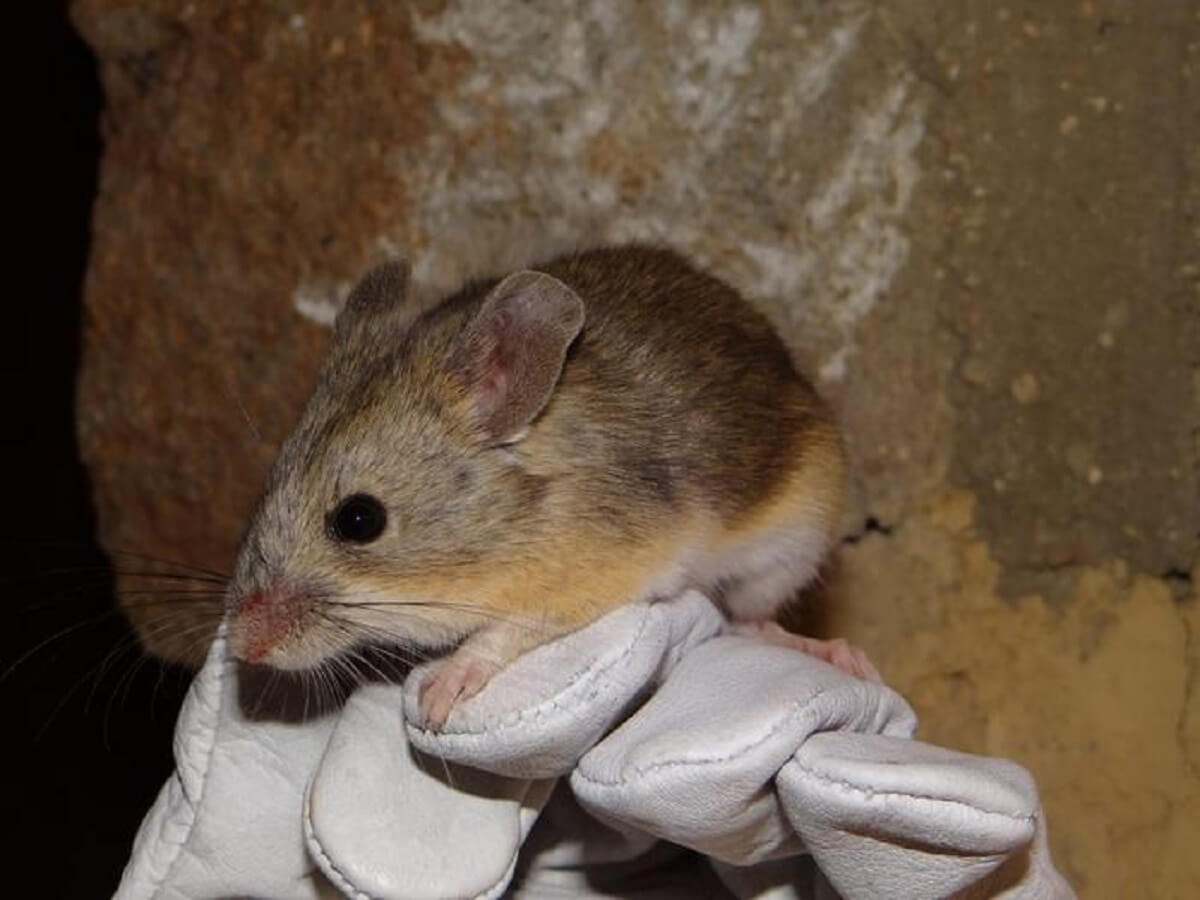
This photograph shows a member of a species of leaf-eared mouse called Phyllotis vaccarum. (Credit: Marcial Quiroga-Carmona)
LINCOLN, Neb. — The astonishing discovery of mice thriving on Andean volcano summits may provide insights into the possibility of mammalian life on Mars, a new study suggests. The environments atop these volcanoes in the Atacama Plateau, spanning Chile and Argentina, bear a remarkable resemblance to Martian conditions.
With their ultra-dry, wind-buffeted landscapes, thin atmosphere, and frigid temperatures, these summits – towering over 20,000 feet above sea level – were once thought to be too hostile for mammalian life.
However, during a 2020 expedition, Professor Jay Storz and mountaineer Mario Pérez Mamani uncovered the presence of the leaf-eared mouse at the 22,000-foot peak of Llullaillaco, a volcano on the Chile-Argentina border. This marked the highest elevation at which any mammal had been found alive.
“The most surprising thing about our discovery is that mammals could be living on the summits of volcanoes in such an inhospitable, Mars-like environment,” says Storz, a biologist at the University of Nebraska, Lincoln, in a media release.

The initial discovery, made by Storz and his colleagues, was a mummified mouse on the summit of Volcán Salín. With this newfound knowledge, they discovered seven more mummified mice nearby. An expansive search of 21 Andean volcano summits revealed 13 mice atop multiple volcanoes exceeding 6,000 meters in elevation.
Radiocarbon dating determined that these mummified mice were only decades old, ruling out theories connecting them to ancient Incan summit sacrifices. Genetic analyses identified them as Phyllotis vaccarum, a mouse species found at lower altitudes in the region.
“The discovery of the mouse mummies on the summits of these freezing, wind-scoured volcano summits was a huge surprise. In combination with our live-capture records of mice on the summits and flanks of other high-elevation Andean volcanoes, we are amassing more and more evidence that there are long-term resident populations of mice living at extreme elevations,” says Storz.
While the Incas are known to have made sacrifices atop these peaks centuries ago, the age of the mummified mice confirms they were not transported by ancient civilizations.
One of the lingering mysteries is the motivation behind the mice's ascent. Despite the abundance of predators like foxes, mountain lions, and birds of prey in the Atacama, the apex of these volcanoes offers a sanctuary, albeit with its own set of challenges.
“With our mountaineering biological surveys in the Andes, we keep making surprising new discoveries about the ecology of extreme high-elevation environments,” Storz concludes.
The study is published in the journal Current Biology.
You might also be interested in:
- Most Beautiful Mountains In The World: Top 5 Peaks According To Experts
- Discovery of cracked mud has alien hunters excited about finding life on Mars
- Glowing Cats? Yep, Believe It Or Not, Fluorescent Mammals Far More Common Than Realized
- Best Of The Best Telescopes For Beginners In 2023: Top 5 Stargazers Most Recommended By Experts
South West News Service writer Stephen Beech contributed to this report.
Lea la versión en español en EstudioRevela.com: Los ratones que viven en los Andes proporcionan evidencia de que los mamíferos podrían vivir en Marte.











No, mammals can not live on Mars. The atmospheric pressure is near vacuum and the air is mostly CO2.
Uhhh... nope! Mars is not solid and we cannot leave this earth.
Mars is rock
And Mars doesn't have a magnetic field to protect against cosmic rays.